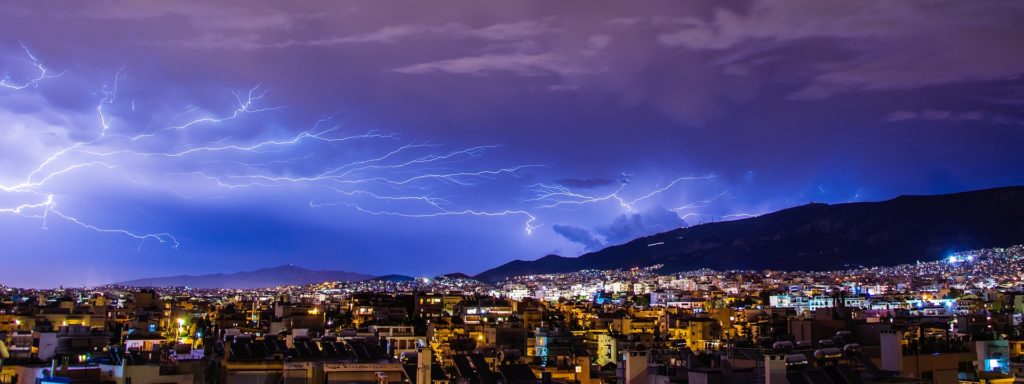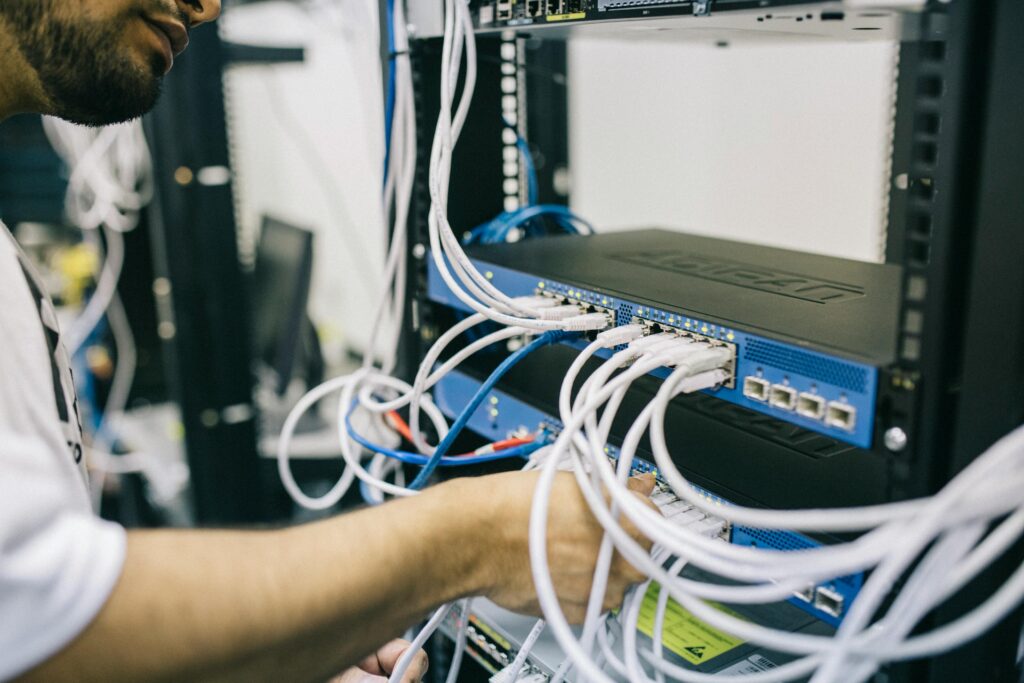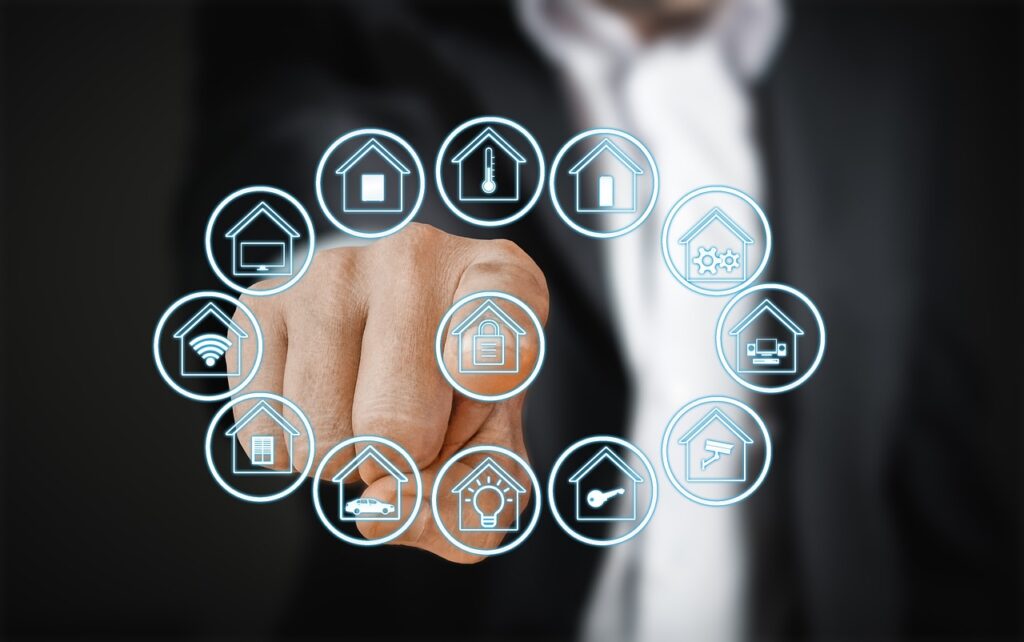Smart home devices increasingly play a more prominent role in our everyday lives. Technology helps us lock the door we forgot to secure on the way to work and add coffee to the grocery list. Smart home technology and security systems can also be partners in helping homeowners prepare for and respond to storms and other emergencies. Whether it’s automated sprinklers during a deluge to avoid flooding or cameras that can tilt, pan, and zoom in on potential hazards in your yard after a storm, smart home devices can provide unprecedented control during difficult times.
1. Be Proactive with Smart Sensors
Security systems come packed with options for smart sensors that can do much more than alert you to motion. Flood sensors can issue warnings when the water rises in your basement, while fire detectors and carbon monoxide sensors can notify you about thickening smoke in the area.
Sensors can also remind you to close a window or a garage door before it starts to rain, or to turn down the humidity on your smart thermostat after a storm to avoid mold. Using your security system’s integrated sensors to stay informed about your home means you’ll have the chance to catch problems early and avoid costly property damage.
2. Stay Informed through Your Smart Hub
Hubs act as the brain of your security system, and you can set them to do the heavy lifting during the summer storm season in several ways. Some hubs not only connect to all your smart home devices and control them from one convenient location but also integrate storm warnings and weather alerts. You can even have a smart weather station that monitors the outside and inside conditions of your home, reporting temperature, barometric pressure, wind speed, and more. Using a hub like Echo with Alexa or Samsung’s Smart Things to deliver notifications might be just the early warning you need to secure your home and get to safety before a storm.
3. Control Your Smart Home System Remotely
Once you know a storm is approaching, being able to control your smart home devices remotely can be a significant advantage. For instance, turning on your sprinklers before an approaching wildfire or checking the sensors for open windows during a thunderstorm are all things you can do remotely through a modern security system or smart hub. Also, if disaster does strike, such as a storm surge that floods your basement, having devices like sump pumps automated and controlled remotely could save your home from water damage. If you do have to endure a longer-term evacuation after a dangerous storm like a hurricane, you can also control your lights remotely to simulate occupancy and keep your home from becoming a target for looting.
4. Alert Authorities Sooner with Professional Monitoring
For extra security when you’re away from your home, opt for a monitored security system that can alert authorities in case of an emergency on your property. Professional monitoring services can verify important notifications like tripped fire alarms or flood sensors and contact you or your local authorities, which could save you from major property damage during a storm.
During disasters, many emergency services are overwhelmed not just by calls for help but also by infrastructure problems that make response times long and arduous. If your security system services include alarm verification, professionals at the dispatch station review video from your property to determine the authenticity of an alarm. If an emergency is verified, authorities will prioritize the call and respond accordingly.
5. Trust Battery Power and Cell Connections to Have Your Back
Losing power frequently happen during storms, but that’s when you might need your smart home functioning the most. Many security systems have integrated smart home devices that are backed up both by battery power and by a mobile connection so even when the power goes out and the phones go down, the security system stays online. Redundant power solutions are helpful in areas where power issues happen frequently, including states that might suffer from rolling blackouts.
6. Let Video Surveillance Spot When the Coast Is Clear
In addition to verifying alarms or tripped sensors and alerting authorities, video surveillance can also be helpful to ensure your home is safe, especially if you’re traveling or have been evacuated. A doorbell camera with a wide view of the street doesn’t just let you know your package has arrived. It can also spot downed electric wires, dangling tree limbs, or other safety hazards after a storm.
Video feeds of your backyard might even help you discern from a distance that your animals are safe or whether you’ve sustained any significant property damage. Moreover, if you’re far from home, you can alert a neighbor or friend to drop by and address property damage you see via video, like broken sprinklers.
7. Soothe Your Pets from a Distance
In addition to preparing your home and being proactive to prevent damage, you can also use smart video cameras and speakers to soothe worried pets and monitor their anxiety during a storm. Turn on music to cover the noise of thunder or use a smart feeder to dispense treats to your furry friend. A little extra TLC may be what keeps your furniture from getting tossed by a stressed-out pet or avoids a messy accident all over the living room carpet. The same tools that give us a world of convenience at our fingertips can also ensure a safer home by providing better communication and control—not just with smart devices but also with the people (and pets) we love.




Comments are closed.